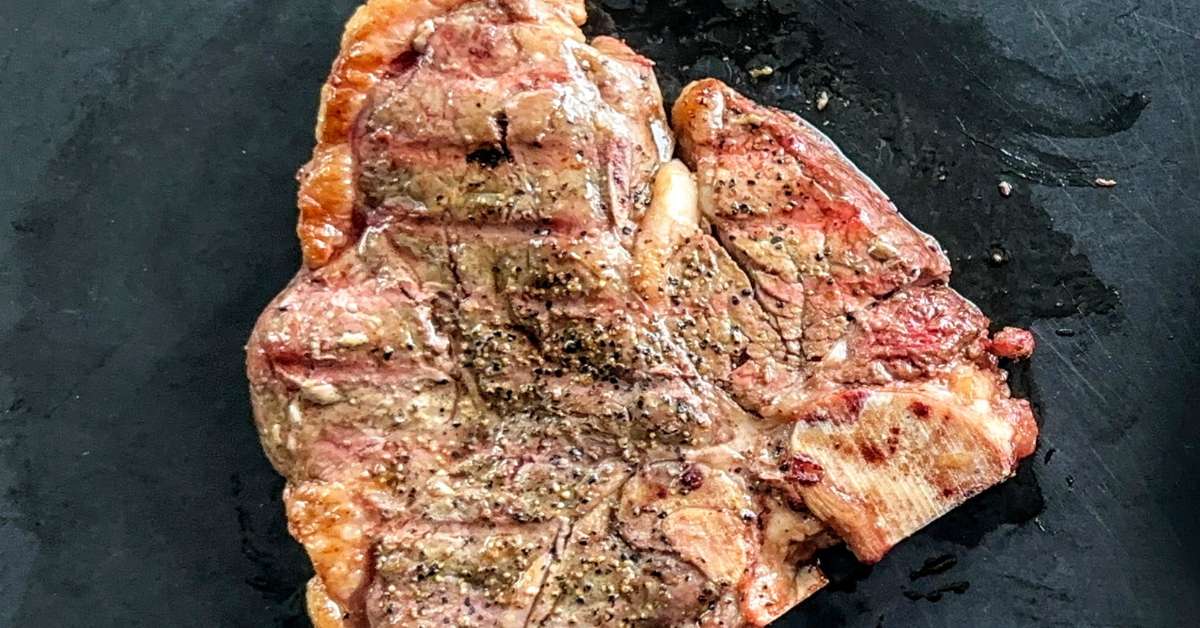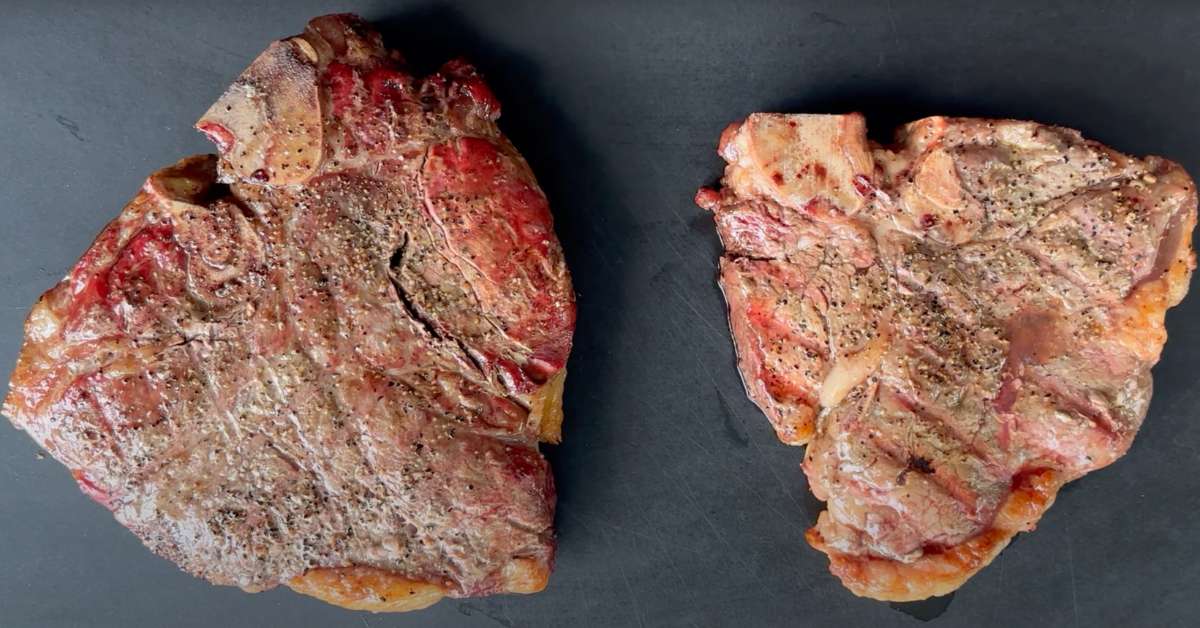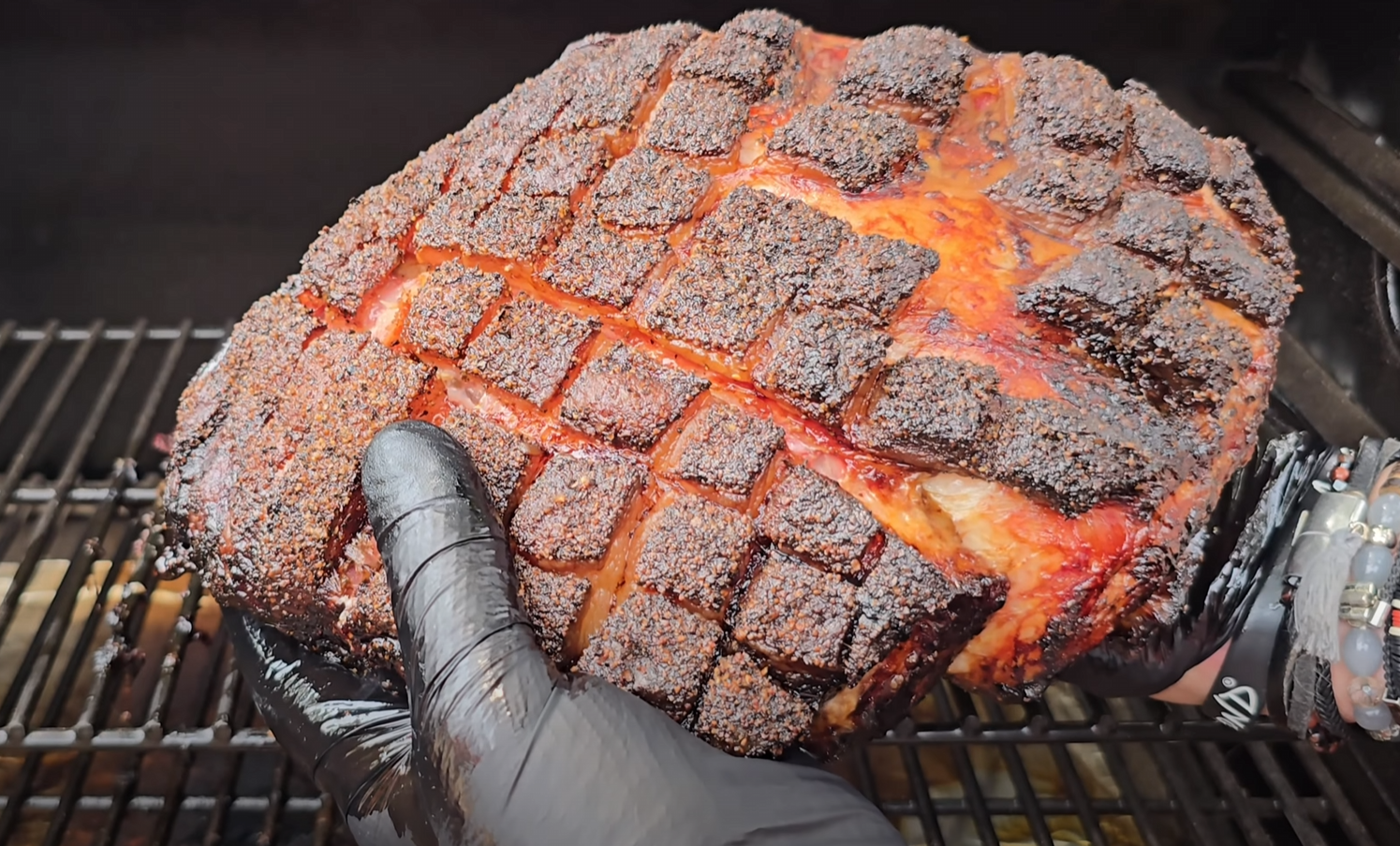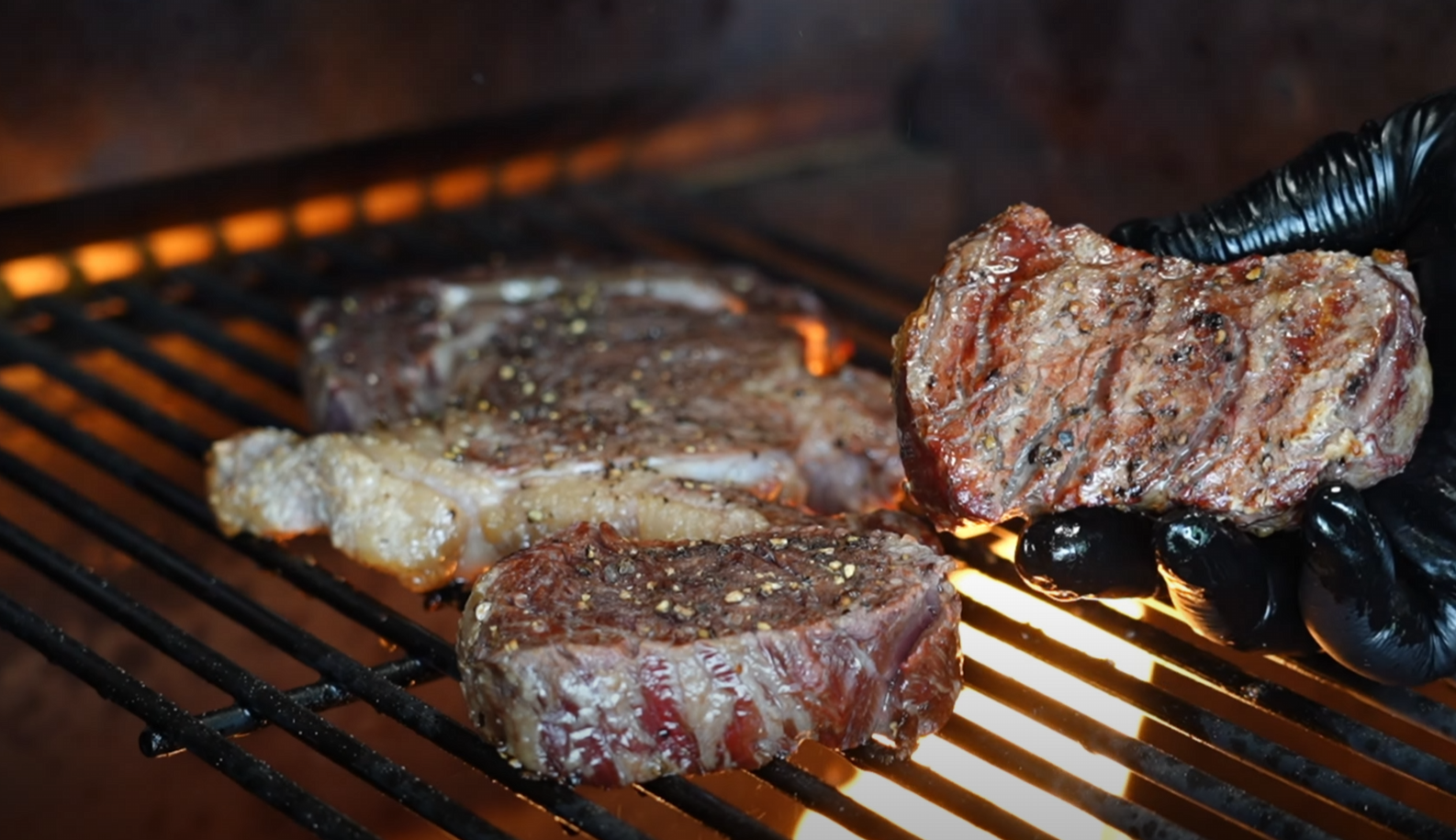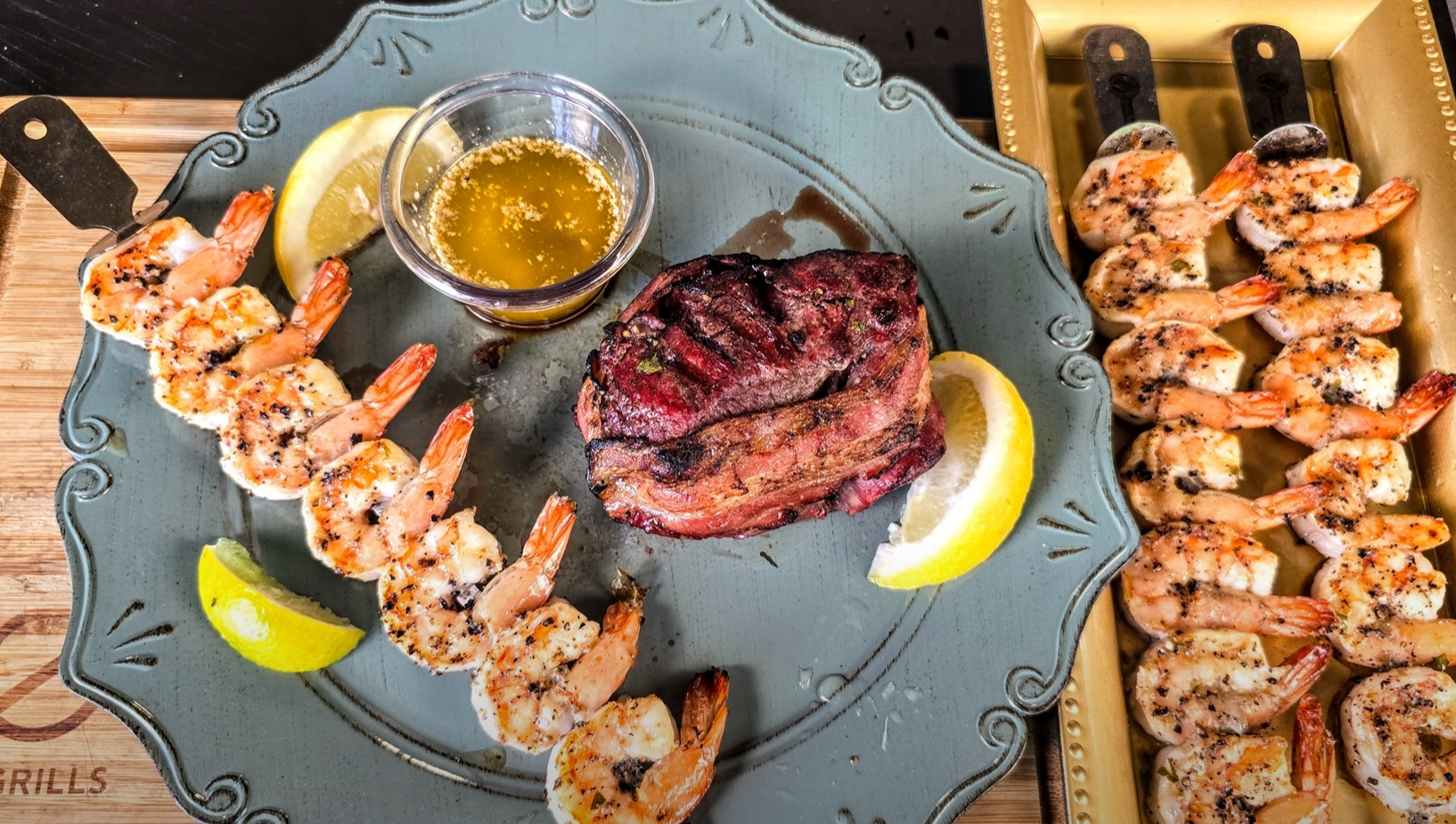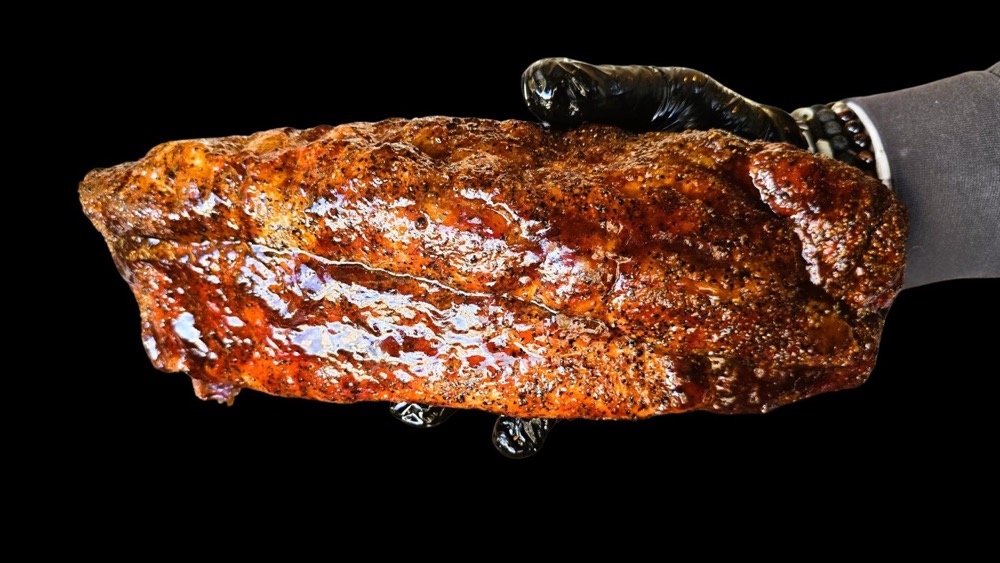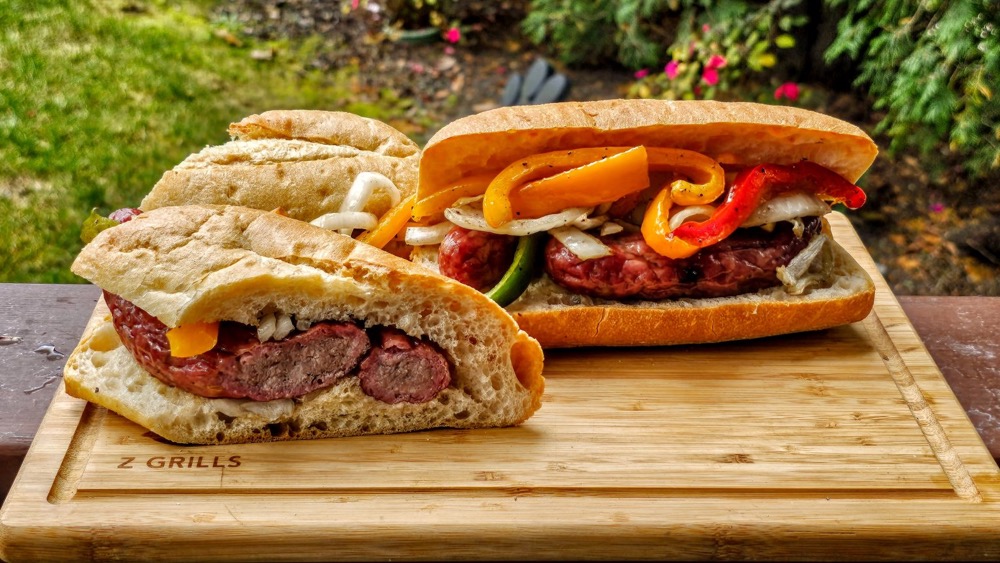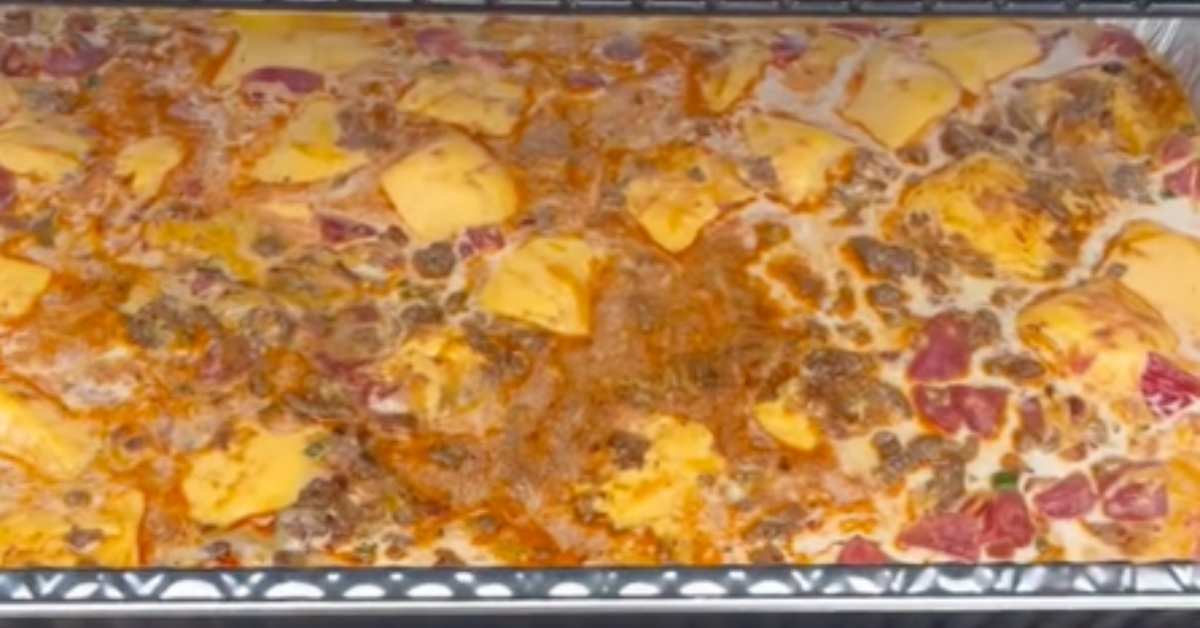T-bone steaks and porterhouse steaks are very popular cuts of meat across America, but although very similar, they are not quite the same. They are cut from the same region of a cow and a porterhouse can be thought of like a bigger version of a T-bone, but a T-bone cannot be a porterhouse.
Today we’ll look at the best way to grill a T-bone steak and a porterhouse steak, how long to grill a T-bone steak or porterhouse steak, and the best wood pellet grills to cook your perfect steak.
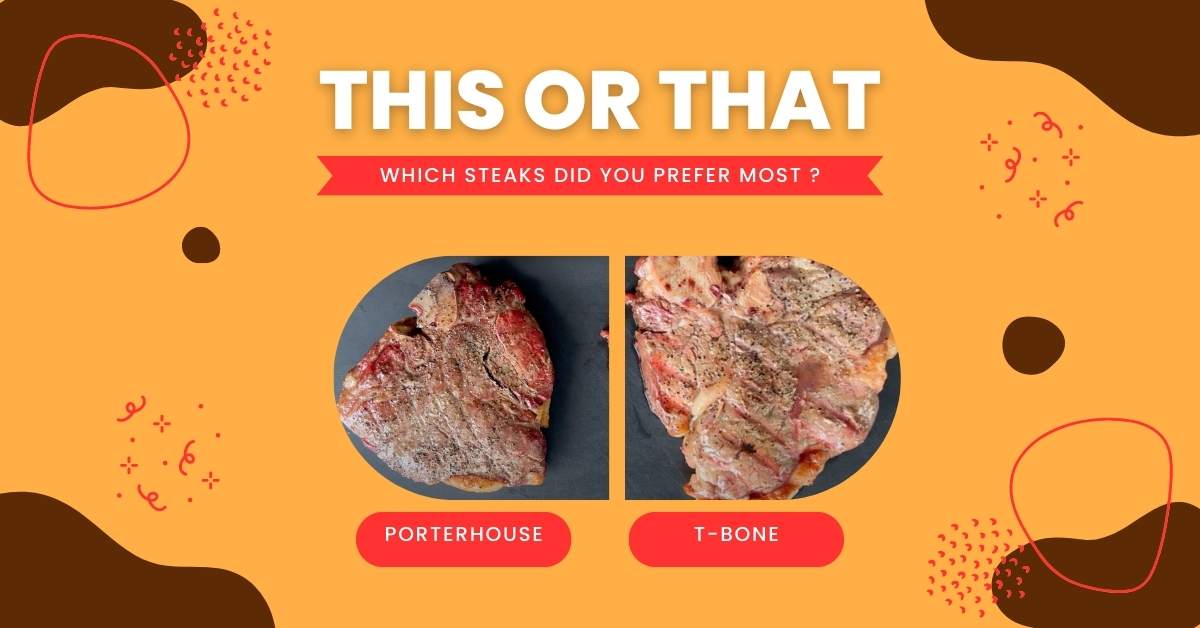
Table of Contents
What is T-Bone Steak?
A T-bone steak is easily recognizable by the T-shaped bone running through the middle of it. This bone separates a New York strip steak and a filet mignon so that you are getting two different steaks in one.
In order for this cut of meat to be considered a ‘T-bone’, the filet mignon side must be at least half an inch wide at the widest point, as set out by the USDA.
What is a Porterhouse Steak?
A porterhouse steak is similar to the T-bone steak, but the filet mignon portion is significantly larger, making it a larger steak overall.
In order for this cut of meat to be considered a ‘porterhouse’, the filet side must be at least 1 ¼” wide at the widest point, as set by the USDA.
Which Part of the Cow Do T-Bone Steak and Porterhouse Steak Come From?
The T-bone steak and the porterhouse steak are both cut from the same area of the cow, called the short loin. The difference is that a T-bone is cut further up the short loin and a porterhouse is cut further down where there is more tenderloin.
Sometimes these cuts are removed from the bone and served separately as a NY strip steak or a filet mignon, but when left on the bone they are referred to simply as T-bone or porterhouse steaks.
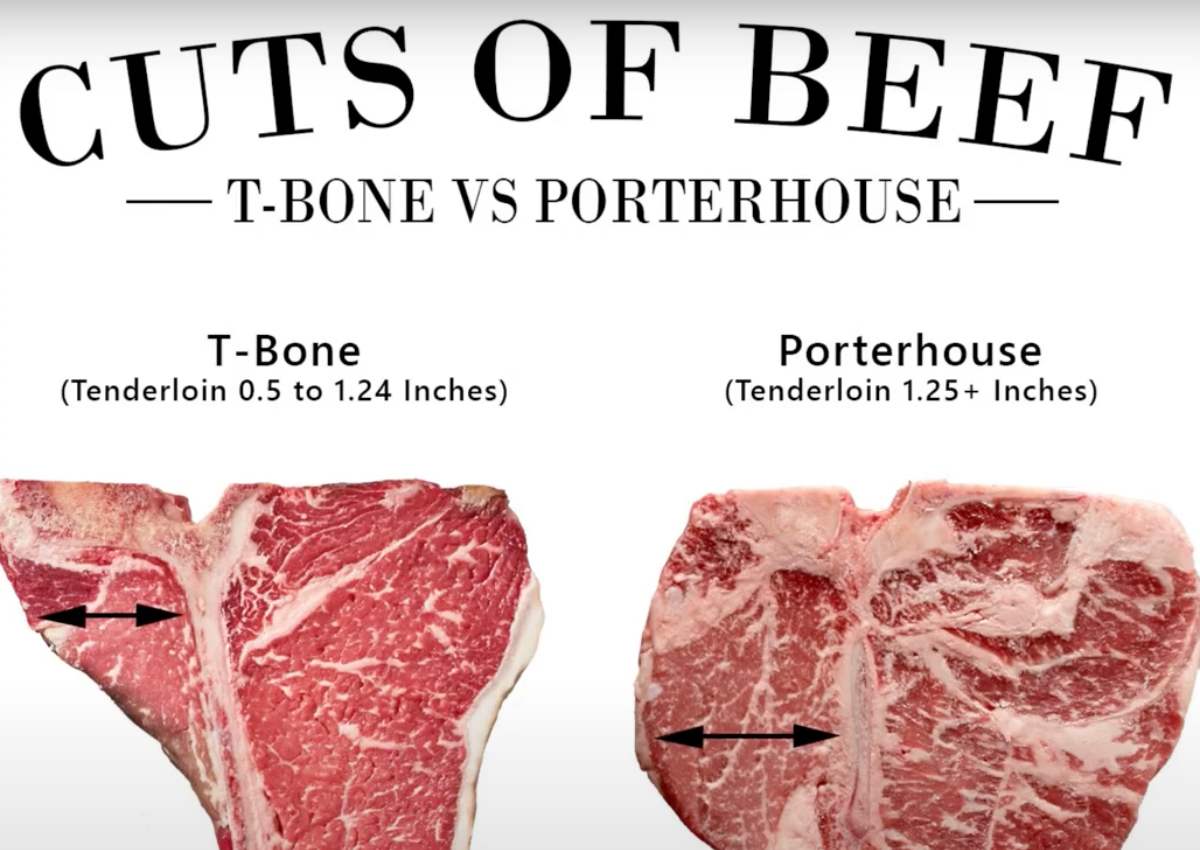
T-Bone Steak vs. Porterhouse Steak: Taste, Texture, and Fattiness Comparison
Since they come from the region of a cow, the taste and texture of a T-bone and a porterhouse steak are generally the same. Some people will find that they can tell the difference between the two, and others will be unable to differentiate.
The flavor of the steak is likely to come down to the way you cook it as well as the quality of the beef.
T-Bone Steak
A T-bone steak has a relatively large fat content, which helps it to stay soft and tender, but is not so good for health. With between 180 and 210 calories and 14g of fat per portion (about one-third of which are saturated fats), it is recommended that you moderate consumption of this cut of beef.
A 3-ounce T-bone steak (one portion) typically contains about 23g of protein, along with almost one-third of our daily dose of vitamin B12.
As well as this, a T-bone steak will provide you with vitamin B6, niacin, riboflavin, and trace elements of iron, selenium, and zinc, which are all important for biological processes in our bodies.
Porterhouse Steak
Like with the T-bone steak, it is important that you eat porterhouse steak in moderation, as just one pound of this cut of beef can have more than 1,000 calories. One serving of porterhouse steak will contain about 200-250 calories, with 20-25g of protein.
Like T-bone steak, and many other cuts of beef, porterhouse will provide you with vitamin B6, iron, zinc, riboflavin, and phosphorus, as well as other beneficial vitamins and minerals.
Porterhouse steak is high in poly- and mono-unsaturated fats, but also high in saturated fats. If you are concerned about the fattiness of your beef, you can simply trim your beef with the majority of fat before grilling.
Price of T-Bone Steak vs. Porterhouse Steak
Whether a T-bone or a porterhouse steak, if it is certified as USDA prime, it will be on the expensive side. That said, due to the larger size of the filet on a porterhouse steak, it will generally come at a much higher cost than a T-bone.
Costs are likely to vary from steak to steak due to quality, weight, length of aging, and place of purchase. For instance, a T-bone or porterhouse steak from a butcher is likely to be more expensive as it will be of better quality than can be found in a supermarket.
You may find that a porterhouse steak is large enough to feed at least two people, so you could save money by purchasing one porterhouse rather than two T-bones without compromising on quality or flavor.
How to Smoke T-Bone vs. A porterhouse on a Pellet Grill
Smoking steaks takes the dining experience to a whole new level. It infuses the meat with aromatic flavors, creates a beautiful crust, and locks in moisture, resulting in an unforgettable taste sensation. To achieve steak-smoking mastery, follow these steps:
Step 1. Bring Steaks to Room Temperature
Before you embark on your smoking adventure, allow the steaks to reach room temperature. This step ensures even cooking and enhances the flavor and tenderness of the meat.
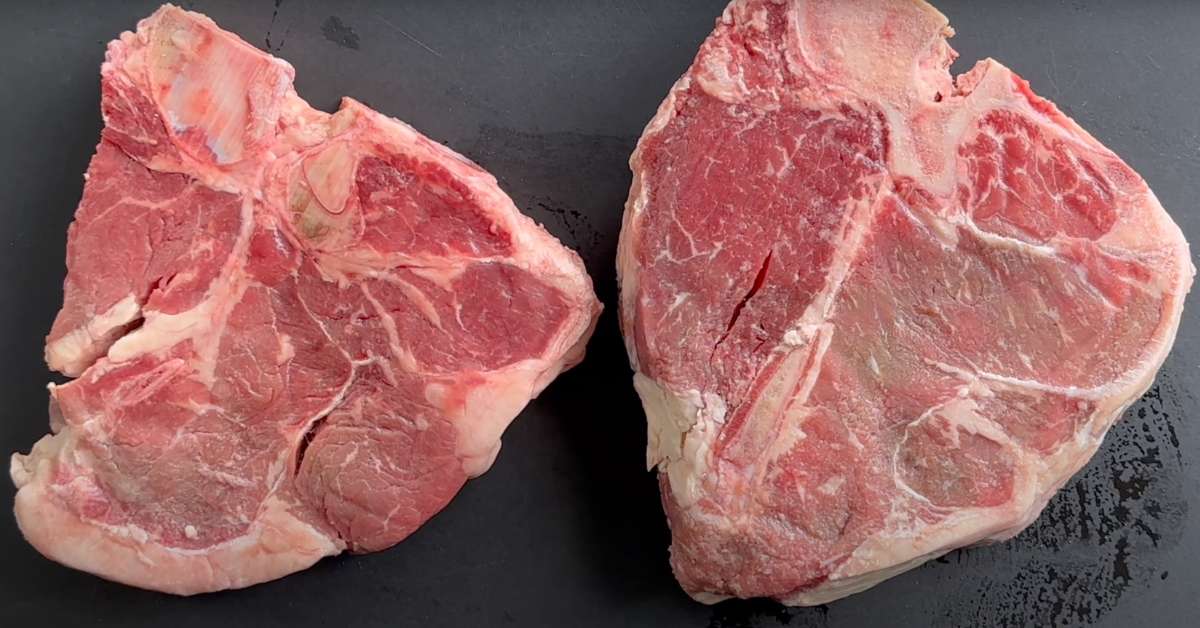
Step 2. Seasoning the Steaks
Prepare your steaks for the smoky embrace by generously seasoning both sides with kosher salt and freshly ground black pepper. The simplicity of this seasoning allows the natural flavors of the meat to shine.
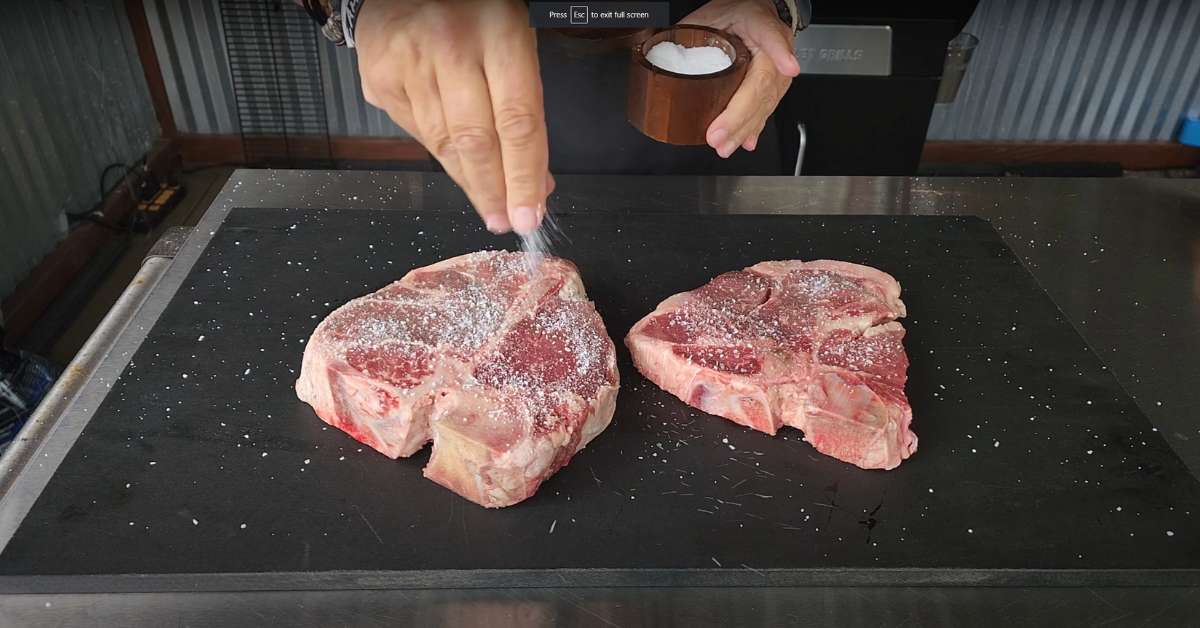
Step 3. Getting the Smoke Rolling
Fire up your Z Grills pellet grill and set it to the smoke setting or the lowest temperature available. The goal is to create a rich blanket of smoke that will envelop your steaks and infuse them with tantalizing flavors.
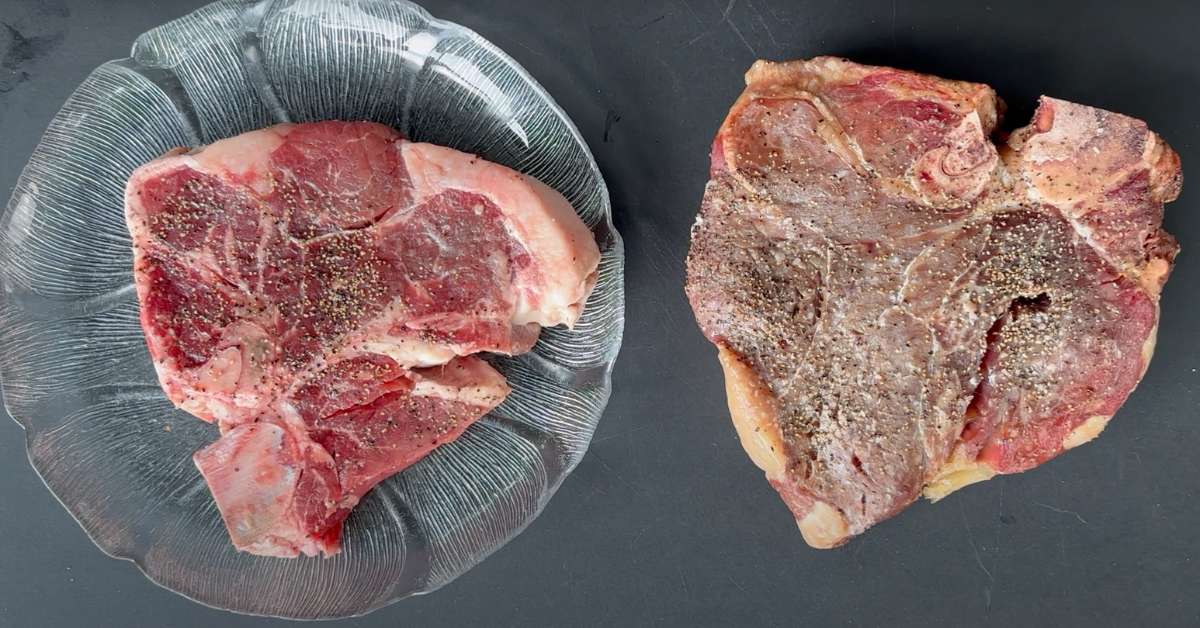
Step 4. Smoking the Steaks
Place the seasoned steaks on the grill grates, allowing them to bathe in the aromatic smoke. Smoke the steaks until they reach the desired internal temperature. For a rare steak, aim for a temperature of 105-110 degrees Fahrenheit, which typically takes around 3 minutes.
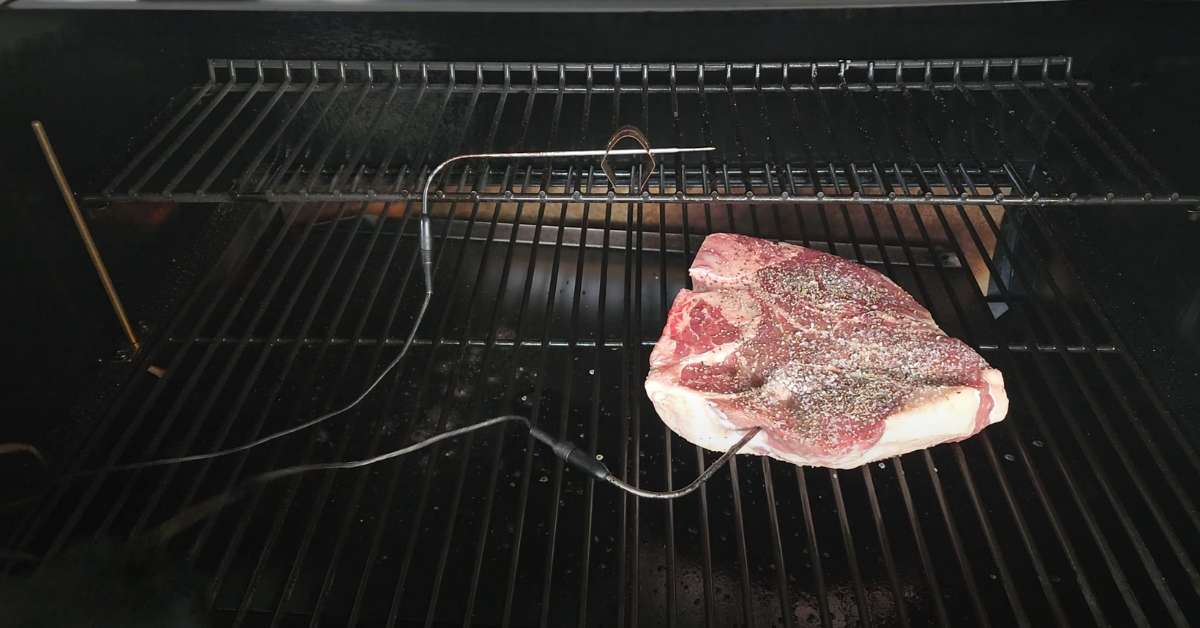
Step 5. Resting the Steaks
Once the steaks have reached the desired temperature, remove them from the pellet grill and let them rest for a short while. This crucial step allows the juices to redistribute, resulting in a more succulent and flavorful steak.
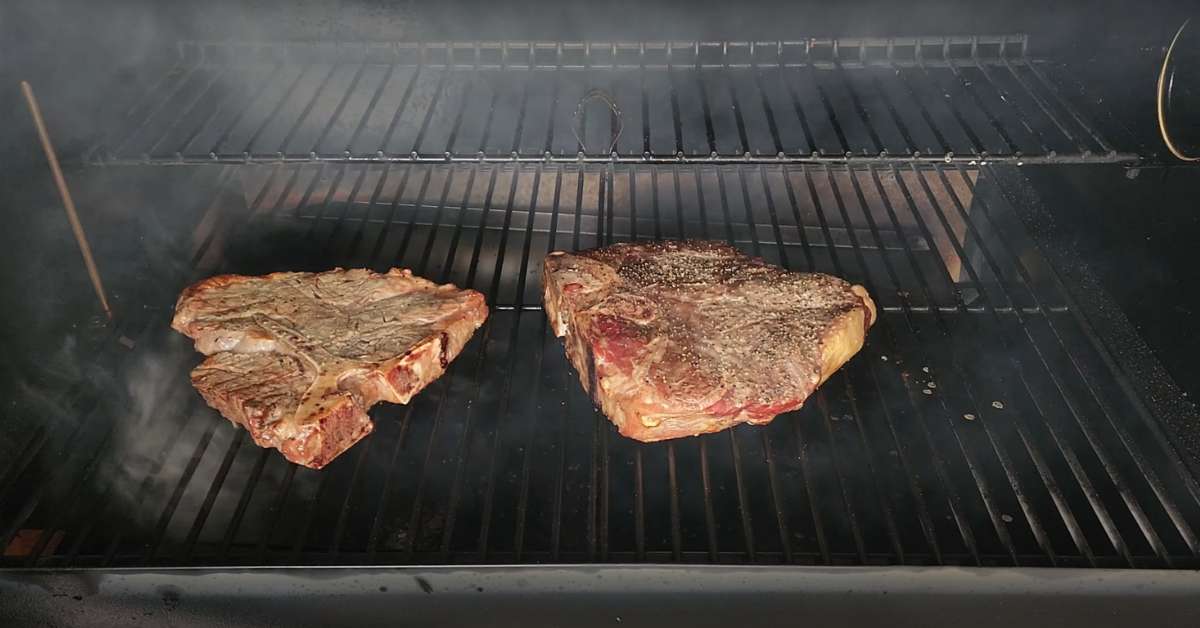
Step 6. Searing the Steaks
Now it’s time to crank up the heat! Increase the temperature of your Z Grills pellet grill to 450 degrees Fahrenheit. Once it reaches the desired temperature, place the steaks back on the grill grates and sear them to perfection. For a beautiful crust and caramelization, sear each side for approximately 2 minutes, giving the steaks a quarter turn halfway through each side.
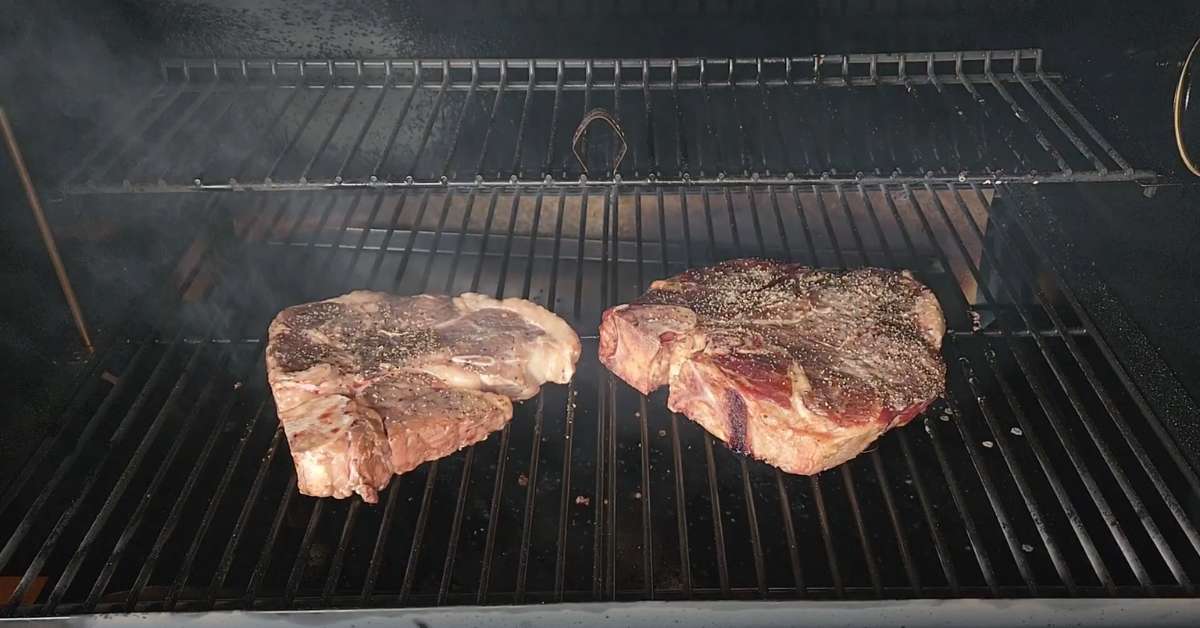
Step 7. Checking for Doneness
As you sear the steaks, keep a close eye on their internal temperature using a meat thermometer. The USDA recommends an internal temperature of 145 degrees Fahrenheit for medium-rare steak. Adjust the searing time based on your desired level of doneness.
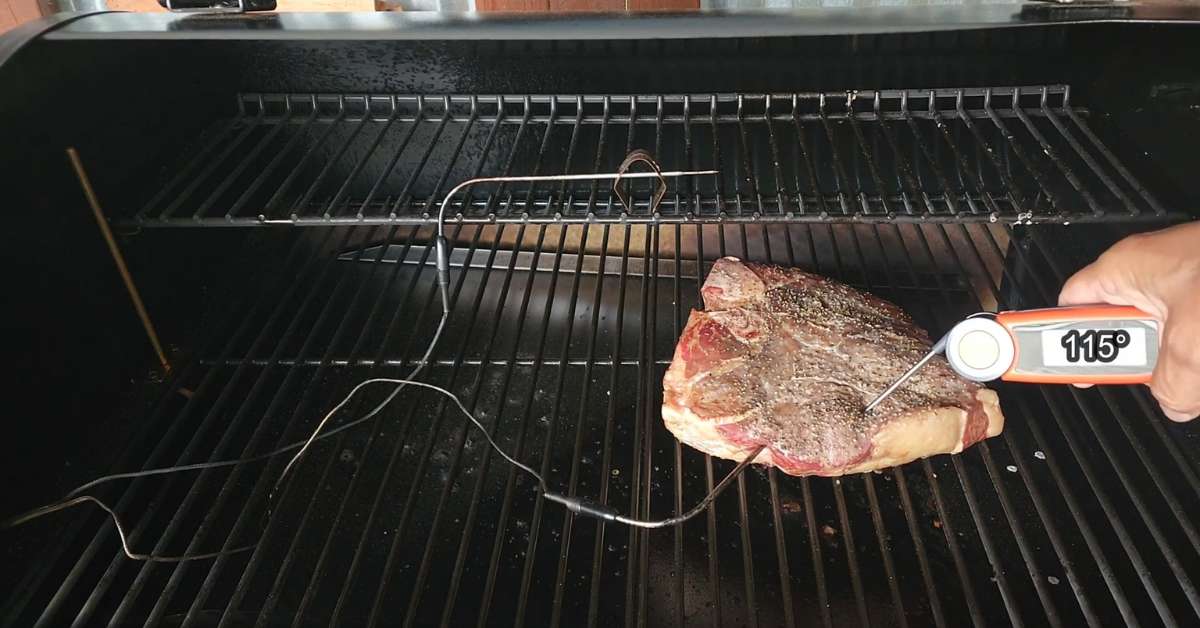
Step 8. Letting the Steaks Rest
Once the steaks have achieved the perfect sear and internal temperature, remove them from the grill and let them rest for about 5 minutes. This short resting period allows the juices to redistribute, resulting in a tender, juicy steak.
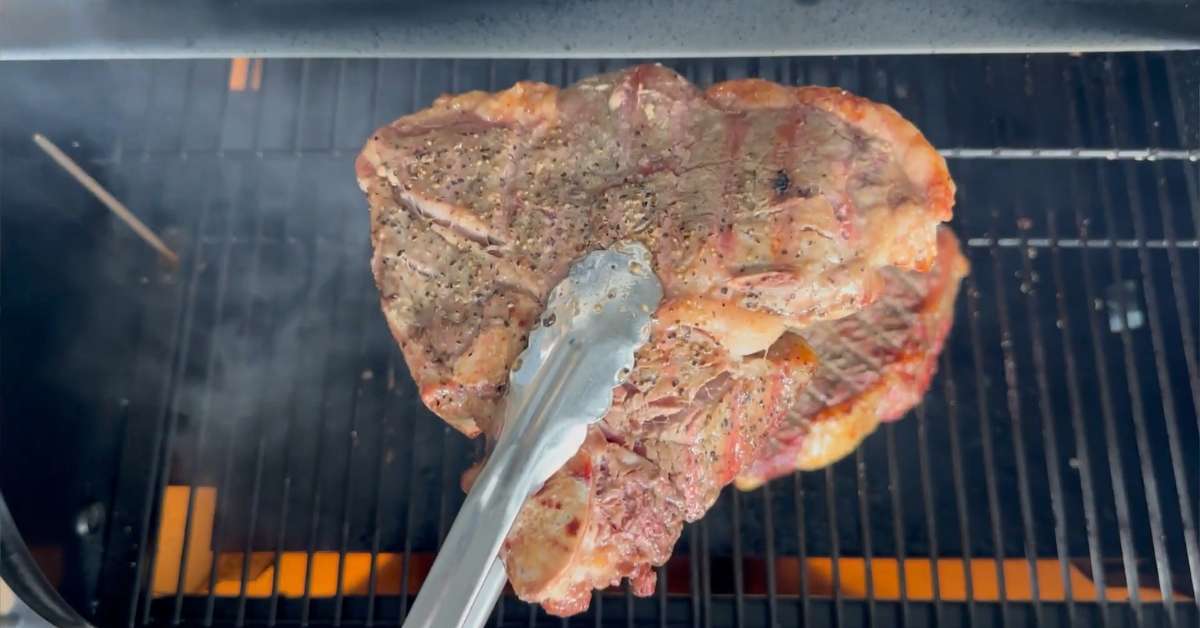
Step 9. Slicing and Savoring
Now comes the moment you’ve been waiting for. Slice the smoked and seared steaks, revealing their succulent interiors and delectable crusts. Serve them hot and savor the exceptional flavors you’ve created through the art of smoking.
Here you can learn how to get more smoke flavor from your pellet grill at here.
FAQs
Can I use different wood pellets for smoking?
Absolutely! Experiment with various wood pellets such as hickory, mesquite, or oak to discover your preferred flavor profiles.
Which is more tender, T-Bone or Porterhouse steak?
Both T-Bone and Porterhouse steaks are known for their tenderness. However, due to the larger proportion of tenderloin, the Porterhouse steak is typically considered more tender compared to the T-Bone steak. The tenderloin section of the Porterhouse steak is highly prized for its buttery texture and melt-in-your-mouth quality.
How do you determine the doneness of T-Bone and Porterhouse steaks?
The doneness of T-Bone and Porterhouse steaks can be determined by measuring the internal temperature using a meat thermometer. The following temperature ranges are generally recommended: rare (105-110°F), medium-rare (110-115°F), medium (120-125°F), medium-well (130-135°F), and well done (150°F and above). Allow the steaks to rest for a few minutes after cooking as the temperature will continue to rise slightly. Click here to learn more tricks about steak cooking times and temperatures.
Do T-Bone and Porterhouse steaks require different cooking times?
Bone and Porterhouse steaks may require slightly different cooking times due to the varying thickness of the cuts. However, the cooking times will primarily depend on the desired level of doneness rather than the specific steak type. Thicker steaks will generally take longer to cook than thinner ones. It’s important to monitor the internal temperature using a meat thermometer to ensure proper cooking.
What are some popular side dishes to serve with T-Bone and Porterhouse steaks?
T-Bone and Porterhouse steaks pair well with a variety of delicious side dishes. Some popular options include roasted vegetables, mashed potatoes, grilled asparagus, sautéed mushrooms, creamy spinach, or a fresh green salad. These sides complement the richness and flavors of the steaks, creating a well-rounded and satisfying meal.
Whether you favor a T-bone steak or a porterhouse steak really depends on individual tastes and preferences, but, whichever cut of beef you are looking to cook, the right grill is a very important thing. A Z Grill can ensure that you are getting perfectly grilled meat every time, and can intensify those flavors so you will never want your steak any other way.
Smoked Porterhouse Steak
Equipment
- Z Grills 700D3 Wood Pellet Grill
- Z Grills Cherry Wood Pellets
Ingredients
- 1 Porterhouse steak
- 1 tbsp Kosher salt
- 1 tbsp Black Pepper
Instructions
- Begin by allowing the steaks to reach room temperature for approximately one hour, ensuring even cooking and optimal flavor.
- Enhance the taste of the steaks by generously seasoning both sides with a blend of kosher salt and freshly ground black pepper.
- Once your grill has reached temperature, grill one side of the steaks for 5 minutes
- Select your preferred wood pellets for smoking. In this recipe, we highly recommend the delightful aroma of Cherry wood pellets.
- Ignite the Z Grills smoke setting or adjust it to the lowest possible level to maximize the infusion of smoky goodness onto the Porterhouse steak.
- Smoke the steaks until they reach the desired internal temperature. For a rare steak, indulge in the flavorful smoke for approximately 45 minutes to 1 hour, achieving a temperature of 105-110 degrees Fahrenheit.
- After the smoking process, swiftly remove the steak from the pellet grill, allowing it to rest briefly before the next step.
- Set the internal temperature of the Z Grills pellet grill to a scorching 450 degrees Fahrenheit, ready for the searing stage.
- To achieve a delectable sear, grill the steak for 2 minutes, give it a quarter turn, grill for another 2 minutes, and then flip. Continue searing until the steak reaches your desired temperature.
- Give the steak a well-deserved rest for 5 minutes, allowing the juices to redistribute within the meat, and then proceed to slice it into tantalizing portions. It's time to savor the fruits of your labor!
Video
Smoked T-Bone Steak
Equipment
- Z Grills 700D3 Wood Pellet Grill
- Z Grills Cherry Wood Pellets
Ingredients
- 1 T-bone steak
- kosher salt
- Black Pepper
Instructions
- Prior to cooking, bring the steaks to room temperature for approximately one hour to ensure even heat distribution during the grilling process.
- Season both sides of the steaks with a generous sprinkle of salt and pepper (S&P).
- Choose Cherry wood pellets as your preferred smoking fuel, as they beautifully complement the flavors of the steaks in this recipe.
- Preheat the Z Grills pellet grill to a temperature of 450 degrees Fahrenheit.
- Once the pellet grill reaches the desired temperature, carefully place the steaks on the grill grate. Grill for 2 minutes, give them a quarter turn, grill for an additional 2 minutes, and then flip. Continue grilling until the steaks reach your preferred level of doneness.
- After grilling, allow the steaks to rest before serving. Let them sit undisturbed for 5 minutes, allowing the juices to redistribute throughout the meat.
- Then, slice the steaks and indulge in their mouthwatering flavors. Enjoy the culinary masterpiece you have created!


